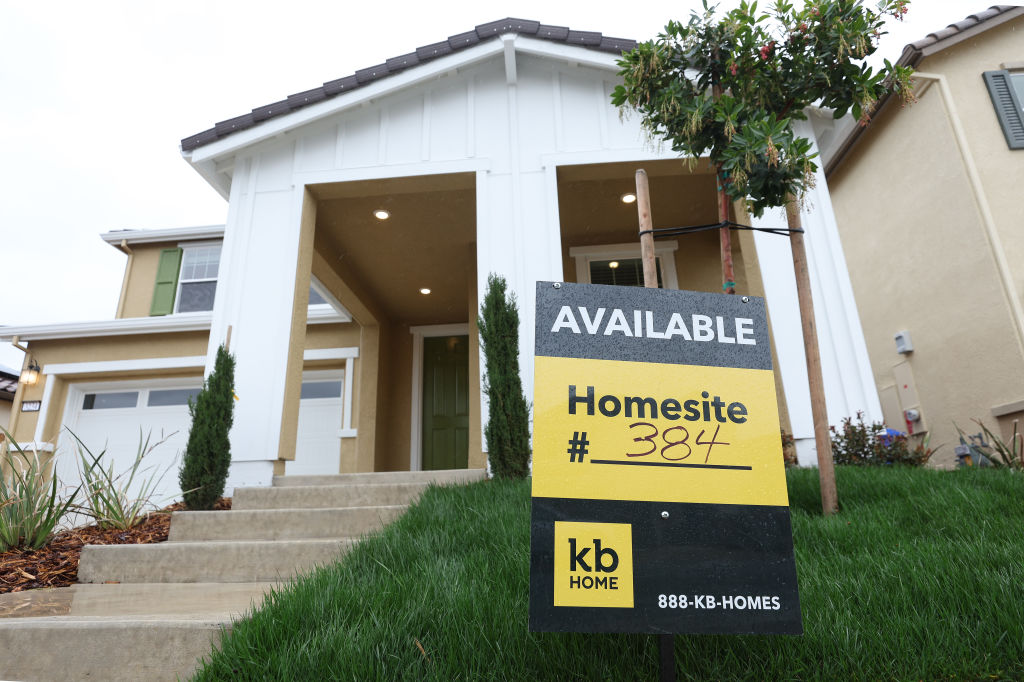11 Ways to Grow Your Wealth
By setting up a solid investment strategy, creating a budget, boosting your income, and making other smart moves, you can design a blueprint to reach your goals.

Brandon Renfro, David Rodeck, Cameron Huddleston, Mallika Mitra, Ella Vincent, Anne Kates Smith, Sarah Brady
Whether you’re taking the first steps to increase your wealth or protecting the assets you’ve accumulated, our advice will help you flourish.
Here, Kiplinger takes a look at 11 ways to grow your wealth.
1. Invest early and often
Getting an early start with investing unleashes what Albert Einstein called the eighth wonder of the world: compound interest. A 22-year-old investor who puts away $5,000 per year until age 30 — and then never contributes another cent — would have $2,503,212 at age 67, assuming a 10% annualized return (the long-term average for stocks). Someone who doesn’t start investing until age 35 but contributes $5,000 each year until retiring at 67 gets only $1,211,827.

Sign up for Kiplinger’s Free E-Newsletters
Profit and prosper with the best of expert advice on investing, taxes, retirement, personal finance and more - straight to your e-mail.
Profit and prosper with the best of expert advice - straight to your e-mail.
The early investor contributes one-fourth of the amount of the one who starts later but winds up with more than twice as much, thanks to the magic of compounding. That’s the payoff for investing early.
It also pays to invest often — in other words, contribute a fixed amount regularly, a time-tested strategy known as dollar-cost averaging. You already do this if you make regular contributions to a workplace retirement plan, such as a 401(k). Similarly, at some brokers, you can arrange recurring, automatic transfers into eligible investments.
At Fidelity, for example, you can set up recurring investments, funded from your bank account or your cash position at Fidelity, into stocks, exchange-traded funds, mutual funds, or baskets of ETFs and stocks. E*Trade allows automatic transfers into mutual funds, ETFs, or a prebuilt portfolio of funds. Interactive Brokers allows recurring transfers from your bank account into certain stocks and ETFs.
Dollar-cost averaging has several advantages. Over time, especially in volatile markets, you’ll buy fewer shares when prices are high and more when prices are low, thereby lowering your average cost per share. Perhaps most important, dollar-cost averaging takes much of the emotion out of investing and limits the very human, but largely unsuccessful, tendency to try to time the market.
2. Keep investment costs low
Everyday millionaires know that what you don’t spend counts — a lot — toward what you make in the end. Starting in February, frugal investors got another gift from Vanguard, the company that invented low-cost investing, when it lowered fees on 87 mutual funds and exchange-traded funds. The cuts were tiny. The expense ratio on Total Bond Market Index (VBLTX) fell to 0.04% from 0.05%, for example, or $4 per year instead of $5 on each $10,000 invested. Expenses charged for Dividend Appreciation ETF (VIG) fell from 0.06% to 0.05%.
Vanguard’s fees were already low, but every little bit helps you keep more of what the market delivers. Consider: According to the latest Investment Company Institute data, expense ratios on stock mutual funds with a blend of growth and value characteristics range from an average 0.26% for the cheapest 10% of funds to 1.68% for the most expensive 10%. If you invested $10,000 over 40 years, assuming a 10% annualized return, you’d pay $11,713 to invest in a fund at the low end, netting over $407,833, according to calculations from Bankrate. At the high end, you’d pay $49,831 and come away with just over $229,817.
Be on the lookout for the cheapest versions of your favorite funds. Several popular ETFs offer lower-cost, higher-returning clones, sometimes referred to as “mini mes.” For example, compare the popular SPDR S&P 500 ETF (SPY), charging 0.095%, with its cheaper clone, SPDR Portfolio S&P 500 (SPLG), charging 0.02%. Invesco QQQ Trust (QQQ) charges 0.20%, compared with 0.15% for Invesco Nasdaq 100 (QQQM).
3. Prioritize your retirement

Setting aside enough money to enjoy a comfortable retirement is a core wealth-building goal. But you’ll need to make some decisions about how to divvy up your savings. Follow these steps to create the optimal strategy for you.
Max out your match. If your employer provides a retirement plan, such as a 401(k), check whether the plan offers matching contributions. At a minimum, you should contribute enough of your own money to the plan to capture the full employer match.
A common formula is a dollar-for-dollar match on the first 3% of salary and 50 cents on the dollar for the next 2%. If you earn $100,000 a year and contribute $5,000, for example, your employer adds another $4,000 to your account. Roughly 12% of employees fail to get their full match and leave money on the table, according to a 2021 survey from MagnifyMoney.
Decide where to put additional contributions. If you can save more after getting the entire match, consider whether to put those contributions in your workplace plan or an IRA (or both). In 2025, you can set aside up to $23,500 in a 401(k) if you are younger than 50. If you are between 50 and 59 or you’re 64 or older, you can contribute up to $31,000. And thanks to new rules that went into effect this year, if you are between the ages of 60 and 63, you can contribute up to $34,750 due to a super catch-up rule. Separately, you can save up to $7,000 in an IRA for 2025 if you are younger than 50 and up to $8,000 if you are 50 or older.
If you can’t max out both accounts, which should you prioritize? Usually, 401(k)s offer more features. Many plans allow loans against your savings before retirement, giving you some penalty-free early access to your money (although it’s best to avoid these loans unless you’re going through a financial hardship). The plan may also provide investment funds with lower fees than those you can access through an IRA. However, an IRA usually offers a wider menu of investment options. With a workplace plan, the choices are limited to what your employer includes.
Evaluate the tax breaks. IRAs and many 401(k)s come in two flavors: traditional and Roth. A traditional account gives you an up-front tax deduction for your contributions, trimming your tax bill today. When you take money out in retirement, however, you owe income tax on the entire amount.
With a Roth account, you pay income tax on your contributions. But when you withdraw money in retirement, your withdrawals are tax-free. In other words, you avoid income tax on years’ worth of gains.
If you expect to be in a higher tax bracket in retirement than you are now, which may be the case if you’re in the early years of your career, a Roth account makes sense. Tax-free income from a Roth could also help you avoid taxes on Social Security benefits and surcharges on Medicare premiums, which kick in if your taxable income in retirement is above certain thresholds. And as a retiree, you don’t have to take required minimum distributions from Roth accounts. If you can afford to minimize withdrawals, you can continue to let your savings grow tax-deferred, potentially allowing you to leave a larger inheritance for your heirs.
Keep in mind that you don’t necessarily have to select one strategy. To hedge your bets, you may be able to split your 401(k) contributions between Roth and traditional options, for instance.
Plan around Roth restrictions. Keep in mind Roth contribution and income limits. For 2025, you can’t invest in a Roth IRA if you are single with a modified adjusted gross income (MAGI) of more than $165,000 or married with a joint MAGI of more than $246,000. (Contributions to a Roth 401(k) are not subject to income limits, but not all employers offer a Roth option).
High-income savers have a workaround, however. With a strategy known as a backdoor Roth IRA, you put after-tax money in a traditional IRA and then convert the traditional IRA into a Roth IRA. There are no income limits for making a Roth conversion. Similarly, you could make after-tax contributions to a 401(k) and then convert the account to a Roth IRA. You may want to consult a financial planner to get help with these strategies.
4. Save for other goals
Everyone should have a rainy-day fund. You can also make the most of tax-advantaged accounts that help you set aside money for health care expenses or college for your children.
High-yield savings accounts. A bank savings account with a high interest rate is an ideal parking spot for your emergency fund, which should hold at least three to six months’ worth of living expenses in case of a job loss or a large, unexpected bill. You can also use a savings account to stash away funds for other short- to medium-term financial goals, such as saving for a new car, a vacation, or a down payment on a house.
Recently, the top-yielding savings accounts offered 4% or more. You can also search for top-yielding accounts in your area at DepositAccounts.com. Before you open an account, check whether you need to maintain a certain balance to earn interest or avoid a monthly fee.
529 college-savings plan. A 529 plan lets you invest and save for college expenses with tax breaks. While there is no federal tax deduction on contributions, many states offer an income tax deduction for residents who contribute to their state’s plan. Your investments grow tax-deferred, and withdrawals are tax-free if you spend the money on qualified education expenses, such as tuition, room and board, and books.
Health savings account. With an HSA, you can set aside money for future health care expenses. To contribute to an HSA in 2025, you must have a high-deductible health insurance plan — that means a deductible of at least $1,650 for an individual plan or $3,300 for a family plan. Eligible individuals can contribute up to $4,300 to an HSA, while families can contribute up to $8,550. You can contribute another $1,000 if you are 55 or older.
HSAs come with exceptional tax advantages. You can deduct your contributions, and withdrawals for health care expenses are tax-free.
Taxable brokerage account. Taxable brokerage accounts let you invest in stocks, bonds, mutual funds, and other assets outside of a retirement plan. Although these accounts don’t come with the same tax advantages as retirement accounts, you can cash out whenever you want without penalties. For that reason, they can be a good place to invest money that you may eventually want to use if you retire early, for example, or to help fund other long-term goals.
5. Pay down debt

Nothing will undo your wealth-building progress more than carrying high-interest debt. Credit cards, which recently had an average rate of more than 21%, according to the Federal Reserve, are the main culprits.
If you’re carrying high-interest debt, make a plan to pay it off ASAP. One helpful strategy is known as the debt avalanche method: You make the minimum monthly payments on all of your accounts but use your spare cash to pay extra toward the account with the highest interest rate. Once it’s paid off, focus on paying off the account with the next-highest rate.
You can also look for ways to lower the interest rate on your debt. If you qualify, you may be able to transfer your credit card balances to a new card with a 0% introductory rate. Don’t make any charges on the card: instead, focus on paying down the balance before the 0% window ends. To find the best card for you, try using the Consumer Financial Protection Bureau’s free credit card explorer tool.
Another option is to get a personal loan that has a lower interest rate than your current debt and use it to pay off the high-rate accounts. Choose the shortest repayment term available with a payment that fits into your budget. To find the lowest interest rate, consider starting your search at local credit unions, because they typically offer lower rates than banks.
If you can’t pay off your debt within the next three years — even with one of the strategies above — or you feel uncertain of which steps to take, bring in professional help. Reach out to a nonprofit credit counseling agency that’s certified by the National Foundation for Credit Counseling to see whether you qualify for a debt-management program or other support. A certified credit counselor can also help you determine whether bankruptcy is a potential solution. To be connected with a counselor, contact the NFCC at www.nfcc.org or 877-902-3398.
6. Polish your credit
A good credit score is a powerful secret weapon. With a high score, you’ll qualify for a lower rate on a mortgage and other loans, lower car-insurance premiums, and more.
Boosting your credit score requires a mix of good habits and time. (Note that there are multiple versions of your credit score, but the same general rules apply to increasing all of them.) The most impactful move is to make your debt payments by the due dates, every single month, over years or even decades.
Keeping your credit card balances low compared with your card limits (both on individual cards and in the aggregate, across all of your accounts) can help elevate your score, too. The lower the percentage of available credit you use, the better. You can also ask your card issuer to increase your card limits annually while continuing to maintain low balances.
Your bank or credit card issuer may offer free credit score updates. And there are plenty of services online that offer complimentary credit scores, too. With the free plan at MyFICO, for example, you can keep track of your FICO score.
Monitor your credit reports. Errors or fraudulent accounts that appear on your credit reports could hurt your credit score, so it’s important to review them regularly. You can pull your reports from each of the major credit-reporting companies (Equifax, Experian, and TransUnion) free at AnnualCreditReport.com. Scan each report for problems, such as a credit account that you don’t recognize or an incorrect credit limit listed for one of your credit cards. You should also check that your name, mailing address, and other identifying details are correct.
If you find a mistake, contact the lender or other entity that furnished the incorrect information, and file a dispute with each credit-reporting company that lists it. Reach Equifax at www.equifax.com/personal/credit-report-services/credit-dispute; Experian at www.experian.com/disputes/main.html; and TransUnion at www.transunion.com/credit-disputes/dispute-your-credit.
Generally, the credit-reporting companies must investigate a dispute within 30 days of receiving it, and they will send your dispute to the business that reported the information. If the business finds that it provided inaccurate information on you, it must notify the credit-reporting companies so that they can correct your reports.
7. Consider a home purchase

Especially for younger people who don’t have a high income or significant assets, buying a home may feel out of reach. Fixed interest rates on 30-year mortgages are hovering around the 7% mark, and median home prices are north of $400,000. The typical monthly mortgage payment in the U.S. has nearly doubled since January 2020, jumping 96.4% to $2,188, according to Zillow. Now, a U.S. household needs an annual income of $106,500 to comfortably afford a typical mortgage. That’s 80% (or $47,000) more today than in 2020, while incomes have risen only 23% over the same period.
Given those headwinds, renting may make more financial and practical sense for you than homeownership after factoring in all the up-front costs, upkeep, and ongoing maintenance expenses. But depending on where you live and the type of home you choose, you may be able to buy a home without busting your budget. Consider a smaller home or an older property in need of some TLC. Some loan programs allow you to roll the cost of repairs and renovations and the home’s purchase price into one mortgage. Plus, various programs are available to help home buyers who don’t have a sizable down payment (more on those below).
And despite the challenges in the housing market, owning a home is still a tried-and-true way to accumulate wealth. According to the Federal Reserve’s latest Survey of Consumer Finances, the median homeowner has nearly 40 times the household wealth of the median renter. As you pay down your home loan, you build equity. When you’re a renter, “you are paying for someone else to build that equity,” says Talia McKinney, a Manhattan-based real estate salesperson with SERHANT. Plus, property values typically increase over time. Years down the road, your home may be worth significantly more than the price you paid for it.
So while higher mortgage rates and rising home prices may give prospective buyers pause, purchasing a home will likely pay off for those who are financially ready to make a move. “While we are now in a higher-rate environment, this is an opportunity for a savvy buyer to take advantage of less competition and get their foot in the door of homeownership,” says Sarah DeFlorio, vice president of mortgage banking with William Raveis Mortgage in New York City.
Down-payment strategies. The larger your down payment, the smaller your monthly mortgage payment — and the less you’ll ultimately owe in interest. Plus, with a down payment of at least 20% of the purchase price, you’ll avoid private mortgage insurance (home buyers usually must pay PMI to their lender if they put down less than 20%).
But if 20% isn’t doable, the extra costs that come with making a smaller down payment may be worthwhile in the long run. Most home buyers, especially first-timers, don’t put 20% down; the average is closer to 8%, according to data from the National Association of Realtors. These mortgages come with no- or low-down-payment options:
Conventional loans. Some conventional loan programs from Fannie Mae and Freddie Mac allow 3% down payments for first-time home buyers.
VA loans. Department of Veterans Affairs loans for military borrowers require no down payment or mortgage insurance, but they do require a funding fee.
USDA loans. U.S. Department of Agriculture loans are for eligible rural properties, and most require zero down. But your household income cannot exceed 115% of the area’s median income.
FHA loans. Federal Housing Administration loans require just 3.5% down with a credit score of 580 or higher, and they have more-lenient borrowing guidelines than conventional loans.
“Some lenders offer specific loan programs for first-time home buyers, including reduced rates and closing costs,” says DeFlorio. Additionally, you may be able to get help from down-payment assistance programs through your state or local housing authority. These programs are typically offered as repayable or forgivable second mortgages or as grants requiring no repayment. There are also special loans for first responders, teachers, and other public servants, DeFlorio notes.
Finally, consider turning to the bank of Mom and Dad, if they’re willing to help, DeFlorio says. One-fourth of first-time buyers say they used a gift or loan from a relative or friend to buy a home, though the majority (69%) relied on their savings, according to NAR research.
8. Check your insurance coverage
As your wealth grows, it’s important to protect it with insurance, especially as natural disasters such as fires, hurricanes, and windstorms appear to be getting more frequent and damaging. In 2024, there were 27 weather-related disasters with losses of more than $1 billion each, led by Hurricane Milton, which caused $50 billion of damage in Florida, and Hurricane Helene, which brought devastating floods to North Carolina. And 2025 got off to a rough start, with the Los Angeles wildfires causing more than $150 billion in damage.
Use the guidance below to help ensure that your coverage is sufficient. If you’d like additional assistance, enlist an insurance agent to run a review with you and search for discounts. You can find an independent agent at TrustedChoice.com.
Homeowners insurance. Homeowners insurance pays to repair damage to your house and to replace your belongings after a fire, theft, or other event. If you need to live elsewhere while your home is under repair, insurance pays for temporary lodging, too. Finally, if someone gets injured on your property and sues you, homeowners insurance covers legal fees, the injured person’s medical bills, and any other court settlements.
Review the limits of your policy to see whether they’re still adequate. Do you have enough coverage to replace all your belongings and pay for a lengthy hotel stay during extended repairs? Check that your coverage is high enough to rebuild your home entirely, given that construction costs have increased because of inflation. If you own high-value items, such as artwork, collectibles, or jewelry, consider purchasing an endorsement to get extra protection; standard coverage typically offers just $1,000 to $2,000 maximum per item.
Pay attention to any exclusions. For example, standard homeowners policies do not cover flood damage. But as last year’s storms in mountainous western North Carolina demonstrated, intense flooding can strike even in areas not typically considered at high risk. For protection, you can buy coverage through the Federal Emergency Management Agency’s National Flood Insurance Program. (And you’re required to buy flood insurance if you live in a high-risk flood zone and have a federally backed mortgage.) Learn more about flood insurance and find providers at FloodSmart.gov.
If you rent, your landlord is responsible for fixing property damage, but you could buy a renters policy to cover your belongings, liability risk, and temporary lodgings during repairs.
Auto insurance. Auto insurance can cover damage to your vehicle from a collision as well as other causes, such as vandalism, hailstorms, or fires. Auto insurance may also cover medical bills for you and your passengers after an accident. If another driver causes an accident involving your vehicle and doesn’t have adequate coverage, your policy could pay for repairs to your car, too.
But most importantly, auto insurance covers damage and injuries you cause to others in accidents in which you are at fault. In nearly all states, you are required to have this coverage. Mandatory minimums vary by state, and they tend to be low. In New York, for example, you must have coverage of at least $50,000 per accident for injuries and $10,000 for property damage. If you caused a crash that created damage with costs exceeding those limits, you would be responsible for covering the difference. A common recommendation is to have $100,000 in liability coverage per person injured in an accident you cause, $300,000 in total liability coverage per accident for bodily injuries, and $100,000 per accident in liability coverage for damage you cause to other vehicles and property.
It’s up to you whether to get collision and comprehensive coverage for damage to your vehicle or to pay for repairs out of pocket. Usually, it’s a good idea to buy coverage. But if your car is worth only a few thousand dollars, you may consider dropping the coverage to reduce your premium because the amount you’d be compensated in a claim may be too little to make the coverage worthwhile.
Umbrella insurance. Auto and homeowners policies tend to cap liability protection at $500,000 per incident. But if a car accident or an accident on your property leads to severe injuries or death, you may be sued for an even higher amount. Umbrella insurance adds liability protection beyond the maximum for home and auto insurance. You can buy umbrella insurance in $1 million increments; the typical policy costs about $400 annually for $1 million in coverage, according to Trusted Choice. Aim to have at least enough liability coverage to match your net worth.
9. Get help from a pro

If you’d rather not tackle the journey on your own, hiring a financial adviser may provide the support you need to succeed. An adviser can review your situation, create a tailor-made plan to help you reach short- and long-term goals, and work with you to set that plan in motion. However, it can get expensive. Most advisers charge fees based on the amount of assets they manage for you, and the typical assets-under-management fee is about 1%. Plus, you might not be looking for a long-term commitment, just some advice to get you started.
Fortunately, some advisers charge by the hour or offer fixed fees. For example, Alissa Krasner Maizes, a registered investment adviser and founder of Amplify My Wealth, offers the choice of paying for a one-time financial check-up with hourly follow-ups, a financial plan for a fixed fee, or longer-term advising. “My hourly and fixed-fee clients can implement their financial plan independently or with one-on-one guidance,” she says.
The average hourly fees that advisers charge range from $120 to $300, and fees for specific plans, such as a retirement road map or a comprehensive financial plan, can range from a few hundred to a few thousand dollars, according to a report by AdvisoryHQ. You can find fee-only financial advisers who charge by the hour through the Garrett Planning Network or XY Planning Network. Maizes cautions, “If you choose to work with an adviser who charges a fixed fee for creating a financial plan, ensure the adviser provides you with access to ask questions while you implement your plan.”
10. Stick to a budget
With a solid budget, you can develop a clear picture of where your money is going and identify areas where you may be able to cut down on spending and dedicate more cash to your wealth-creation goals.
Start by reviewing your spending over the past year. That’s more effective than creating an ideal budget that isn’t actually tied to your behavior, says Adrianna Adams, a financial adviser with Domain Money.
You can usually pull a history of spending for free via your credit card company or bank, though you may not get a full view of your finances this way. If you have more than one card or institution, Adams suggests using an app that can pull all the data together for you, such as Monarch Money or Copilot Money ($99.99 and $95 per year, respectively).
General budgeting rules of thumb are to limit your housing costs to no more than 32% of your net income and your car-related expenses to around 10%, Adams says. She recommends keeping your split between groceries and restaurant or take-out meals at about 50-50.
From there, consider what else you value — such as vacations, shopping, or hobbies — and figure out what percentage of your income it makes sense to spend on those categories.
Then determine where you can trim spending, if necessary. One way to do this is to identify a spending category that brought you joy and another that didn’t add value to your life relative to its cost; the latter may be one you can cut back on.
Finally, make a plan to pulse-check your budget regularly. Adams suggests reviewing it monthly. “It can get out of hand very quickly,” she says.
11. Boost your income

One of the best ways to save more money is to earn more money. By increasing your income and keeping costs low, you can boost the amount you invest or stash in savings each month.
Asking for a raise at work can be a good place to start. U.S. employers are expected to increase salary budgets by 3.8% in 2025, according to a survey by human resources organization WorldatWork. You might be able to get a bigger bump in pay, though, if you negotiate well.
Begin by evaluating whether the company you work for is on solid financial ground, says Elizabeth Koraca, a career strategist and host of the Speaking Up podcast. Then, build your case for why you deserve a raise. “You need to tout your own achievements to support your request for a raise,” she says.
Also, if you’re getting paid below industry standards, present your boss with research on what people in your position are earning. Websites such as Indeed.com and Payscale.com offer salary data, as does the U.S. Bureau of Labor Statistics.
If your boss says there’s no opportunity for a raise now or in the near future, it might be time to look for a new job, Koraca says. Research shows that switching jobs typically results in a boost in pay. The median pay increase from January 2024 to January 2025 for workers who changed jobs was 6.8%, compared with 4.7% for those who stayed at their jobs, according to ADP Research.
If you love your current job and don’t want to leave it, you could ask for other perks, such as a more flexible schedule that gives you time to earn money on the side. “If you have a unique talent or skill, consider sharing it and earning extra money from it,” Koraca says.
Other money-making options include finding a side hustle, such as driving for a rideshare service or working in retail, selling gently used items, or renting rooms in your home if you live in a tourist area.
Note: This item first appeared in Kiplinger Personal Finance Magazine, a monthly, trustworthy source of advice and guidance. Subscribe to help you make more money and keep more of the money you make here.
Sarah Brady, Cameron Huddleston, Deborah Kearns, Mallika Mitra, David Rodeck, Anne Kates Smith and Ella Vincent contributed to this article. Send comments to feedback@kiplinger.com.
Related Content
Get Kiplinger Today newsletter — free
Profit and prosper with the best of Kiplinger's advice on investing, taxes, retirement, personal finance and much more. Delivered daily. Enter your email in the box and click Sign Me Up.
- Cameron HuddlestonFormer Online Editor, Kiplinger.com
- David RodeckContributing Writer, Kiplinger's Retirement Report
- Brandon RenfroContributor
- Mallika MitraContributing Writer
- Sarah BradyContributor
- Anne Kates SmithExecutive Editor, Kiplinger Personal Finance
- Ella VincentStaff Writer
-
 Stock Market Today: Good Feelings and Solid Data Lift Stocks
Stock Market Today: Good Feelings and Solid Data Lift StocksResilience and de-escalation defined another generally positive day for financial markets.
-
 Five Home Upgrades for Surviving Record-Breaking Heat
Five Home Upgrades for Surviving Record-Breaking HeatWith global temperatures expected to hover at record highs for years to come, now’s the time to upgrade your home for long-term heat resilience.
-
 Stock Market Today: Good Feelings and Solid Data Lift Stocks
Stock Market Today: Good Feelings and Solid Data Lift StocksResilience and de-escalation defined another generally positive day for financial markets.
-
 What the HECM? Combine It With a QLAC and See What Happens
What the HECM? Combine It With a QLAC and See What HappensCombining a reverse mortgage known as a HECM with a QLAC (qualifying longevity annuity contract) can provide longevity protection, tax savings and liquidity for unplanned expenses.
-
 721 UPREIT DSTs: Real Estate Investing Expert Explores the Hidden Risks
721 UPREIT DSTs: Real Estate Investing Expert Explores the Hidden RisksPotential investors need to understand the crucial distinction between a REIT's option to buy a Delaware statutory trust's property and its obligation.
-
 I'm an Insurance Expert: Yes, You Need Life Insurance Even if the Kids Are Grown and the House Is Paid Off
I'm an Insurance Expert: Yes, You Need Life Insurance Even if the Kids Are Grown and the House Is Paid OffLife insurance isn't about you. It's about providing for loved ones and covering expenses after you're gone. Here are five key reasons to have it.
-
 Stock Market Today: Tesla Drags on Stocks Amid Musk-Trump Feud
Stock Market Today: Tesla Drags on Stocks Amid Musk-Trump FeudSentiment has soured between President Trump and his once-loyal ally, Tesla CEO Elon Musk.
-
 My Professional Advice: When It Comes to Money, You Do You
My Professional Advice: When It Comes to Money, You Do YouThis is how embracing the 'letting others be' and 'learning to surrender' mindsets can improve your relationship with money.
-
 Direct Indexing Expert Explains How It Can Be a Smarter Way to Invest
Direct Indexing Expert Explains How It Can Be a Smarter Way to InvestDirect indexing provides a more efficient approach to investing that can boost after-tax returns, but is it right for you?
-
 Stock Market Today: Stocks Brush Off Weak Jobs Data
Stock Market Today: Stocks Brush Off Weak Jobs DataThe yields on the 2-year and 10-year Treasury notes fell sharply after a pair of weak economic reports.